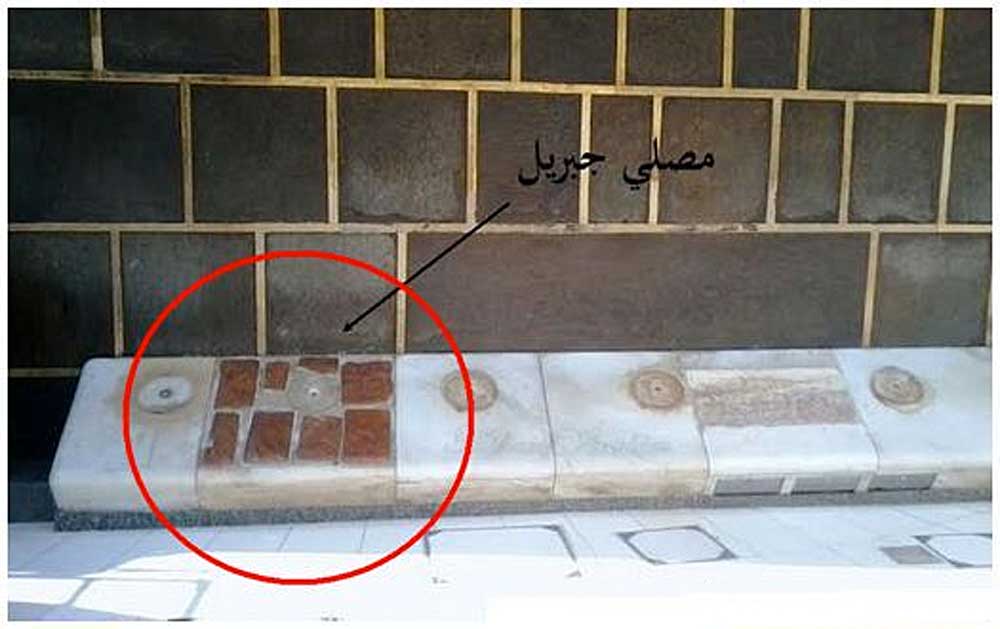Musallah Jibraeel

These brown marble pieces mark the spot where the angel Jibraeel (upon him be peace) taught the Prophet (peace and blessings of Allah be on him) how to pray.
- Another line on the picture came out from the bottom right hand side of the door of the Ka’ bah, and this was labelled as Musalla Jibraeel. This area is marked by some brown bricks on the white tiles and is known as the area in which Jibraeel (peace be upon him) taught the Prophet (peace be upon him) how to perform the five daily prayers that were prescribed during the Mi’ raj.
- Jibraeel (peace be upon him) came to the Prophet (peace be upon him) on two consecutive days to teach him the Salahs. On the first day he came at the beginning time of the prayer and on the second day he came at the end time of the prayer to teach the Prophet (peace be upon him) and his companions (may Allah be pleased with them) the timings of each prayer and also how to perform each prayer.
- Ibn Abbas narrated that the Prophet (peace be upon him) said, “ Jibraeel (peace be upon him) led me in (in Salah) twice at the House (the Ka’ bah). So he prayed Zuhr the first time when the shadow was similar to (the length of) the strap of a sandal. Then he prayed Asr when everything was similar (to the length of) its shadow. Then he prayed Maghrib when the sun had set and the fasting person breaks fast. Then he prayed Isha when the twilight had vanished. Then he prayed Fajr when fajr (the dawn) began, and when eating is prohibited for the fasting person. The second time he prayed Zuhr when the shadow of everything was similar to (the length of) it, at the time of Asr the day before. Then he prayed Asr when the shadow of everything was about twice as long as it. Then he prayed Maghrib at the same time as he did the first time. Then he prayed Isha, the later one, when a third of the night had gone. Then he prayed Subh (Fajr) when the land glowed. Then Jibraeel (peace be upon him) turned towards me and said: O Muhammad (peace be upon him)! These are the times of the Prophets before you, and the time is what is between these two times.” [Tirmidhi and Abu Dawud]